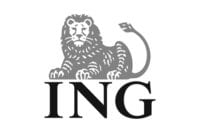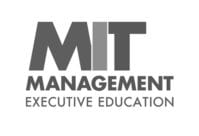Leadership is a journey. Every great leader has walked a path of growth, self-discovery, and evolution. The key to becoming a great leader isn’t about reaching a certain point—it’s about how you continue to grow, learn, and influence over time.
In my experience, leadership development can be broken down into three key stages: self-awareness, effective influence, and continuous growth. These stages lay the foundation for powerful leadership that not only drives results but also fosters connection, engagement, and long-term success.
Let’s dive into these three key stages that can guide you on your leadership journey.
Stage 1: Self-Awareness: Understanding Who You Are as a Leader
The first step in becoming a great leader is self-awareness. You can’t lead others effectively until you truly understand yourself. Self-awareness involves knowing your strengths, weaknesses, values, leadership style, and how you respond to different situations. It’s about having a clear understanding of who you are as a person and as a leader.
In my own leadership journey, the more I understood myself, the more I could build strong connections with others. The ability to reflect on my actions, seek feedback, and identify areas for growth allowed me to lead from a place of authenticity.
To develop self-awareness, here are a few steps you can take:
- Seek feedback: Ask your team for honest input on your leadership style. This can reveal blind spots you might not notice.
- Reflect regularly: Take time to reflect on your actions and decisions. Journaling is a great way to gain clarity and focus on what works and what doesn’t.
- Know your triggers: Understand what causes you to react in certain ways—this helps in managing your emotions and maintaining your composure during tough situations.
Self-awareness is the foundation of emotional intelligence (EQ). The more you understand yourself, the better equipped you’ll be to connect with others and lead with empathy.
"The only way to do great work is to love what you do."
Steve Jobs, Apple Co-Founder
Stage 2: Effective Influence: Leading with Purpose
Once you’ve developed self-awareness, the next stage is effective influence. This stage is where you begin to lead with purpose and inspire others to follow. It’s not enough to have self-awareness—you must learn how to use that awareness to guide, motivate, and influence those around you.
As you move into this stage, focus on building trust and aligning your vision with the needs and goals of your team. People follow leaders they trust, and influence comes from the ability to communicate your vision clearly and inspire others to take action toward that vision.
To lead with effective influence, try:
- Setting a clear vision: Your team needs direction. Paint a picture of the future and explain why the work they’re doing matters.
- Building trust: Lead by example. Follow through on promises and demonstrate integrity in your actions.
- Being empathetic: Understand the emotions and needs of your team. This helps you connect with them on a deeper level and motivates them to work together toward a common goal.
Leadership is about inspiring action. When your team feels connected to the purpose behind their work, they’ll be more motivated and engaged, driving greater performance.
Stage 3: Continuous Growth: Adapting and Evolving as a Leader
The final stage of leadership development is continuous growth. Leadership is a journey of constant learning. The most effective leaders know that they don’t have all the answers and are always open to improving themselves. Leadership is not static; it’s dynamic. As industries evolve, so must leaders.
To stay relevant and effective, you must remain open to feedback, embrace new challenges, and continue seeking opportunities for growth. Great leaders don’t stop at “good enough”—they always look for ways to improve and adapt.
Here’s how to continue growing as a leader:
- Seek mentorship: Find a mentor who can provide guidance and support as you navigate challenges and new opportunities.
- Invest in learning: Attend leadership seminars, read books, or take courses that will help you develop new skills.
- Adapt to change: The business world is constantly shifting, and so should your leadership style. Stay flexible and open to new ideas and perspectives.
Leadership is a lifelong learning process. Embrace it and never stop evolving.
Conclusion
Becoming a great leader is a continual process of self-awareness, effective influence, and continuous growth. These three stages will guide you on your journey, but it’s important to remember that leadership isn’t a destination—it’s a path of ongoing development.
If you’re ready to take the next step in your leadership journey, book a call with me to explore how we can work together to unlock your leadership potential. Let’s keep growing and evolving as leaders—because leadership is not about perfection, it’s about progress.





























